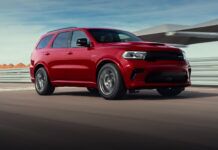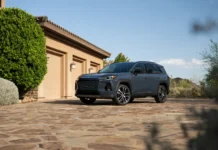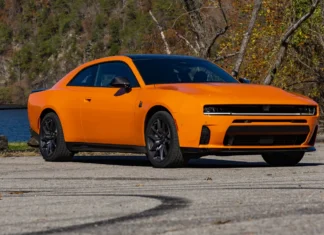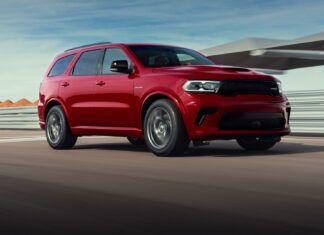The 2026 Mazda CX-70’s base model offers a more compelling value with more standard equipment.
When it first launched, we were a bit puzzled by the “new” Mazda CX-70 effectively just being a two-row CX-90. That’s still the case for 2026, though the automaker is tweaking this model specifically to enhance its value prospect, bring a sportier look and offer a bit more range if you go for the plug-in hybrid version. As you probably expected, however, the changes do come with a higher starting price compared to the outgoing 2025 models.
Let’s start off with the 3.3-liter inline-six ‘Turbo’ models. There are still two power and trim variations, with the Turbo Preferred, Premium and Premium Plus putting out 280 horsepower and 332 lb-ft of torque. The $43,780 Turbo Preferred — up $1,805 from last year’s equivalent — mainly brings a host of seat upgrades to its list of standard equipment. The leather seats are now ventilated up front as well as heated, while you also get heated rear seats. Both the driver and passenger front seats are 8-way power adjustable, while the driver’s side also adds memory functionality.
The Turbo Preferred also still gets LED lighting, retractable rear sunshades, a power liftgate, remote folding rear seats and wireless phone charging. You do still get analog gauges with a 7-inch screen (all higher trims get Mazda’s 12.3-inch fully digital cluster), though you do still get a standard 12.3-inch infotainment display with wireless Apple CarPlay and Android Auto integration. Front and rear USB-C ports, keyless entry, push-button start and automatic climate control are also standard, as are all-wheel drive and Mazda’s i-ActivSense safety suite (lane keep assist, blind-spot monitoring, driver attention alert, etc.).
Next up, the 2026 Mazda CX-70 3.3 Turbo Premium comes in at $47,810. You get more goodies for the extra cash (as you’d expect), like the digital gauge cluster as well as a head-up display and Bose 12-speaker audio system. You also get Mazda’s built-in, online-updated navigation system and SiriusXM satellite radio. On the safety side, Mazda’s default driver assistance systems are enhanced, so you get things like traffic sign recognition, speed limit assist and a range of other collision prevention/intervention systems. Turbo Premium and higher 3.3-liter models get a towing package as well, so you can tow up to 5,000 pounds.
The $51,100 Turbo Premium Plus keeps adding to the luxuries list, with a set of Nappa leather seats, a 360-degree camera, adaptive front lighting and a 150-watt power outlet in the cargo area.
The $54,770 Turbo S Premium and $58,200 Turbo S Premium Plus broadly track with the other models, feature-for-feature. However, this time around you get a power bump to 340 horsepower and 369 lb-ft of torque. That extra power still makes its way to the ground through an 8-speed automatic transmission and all-wheel drive.
What about the PHEV?
For 2026, the Mazda CX-70 plug-in hybrid still gets 323 horsepower and 369 lb-ft of torque as its peak output. However, the automaker says it manages 30 miles of all-electric range (up from 26), so that is at least a slight improvement.
The naming convention has changed a bit, too, with PHEVs now wearing the “SC” designation. The starting SC Plus trim now comes in at $45,780, while the SC Plus is $48,780. If you’re keeping score, that is significantly less expensive than the 2025 variants — by $10,600 and $10,795 respectively. So even without the federal tax incentive for PHEVs in effect, you’ll still pay less for an electrified CX-70 than you would have at launch.
I’ve criticized the PHEV’s setup, using Mazda’s standard 2.5-liter SkyActiv four-pot with an electric motor, for being a bit rough around the edges compared to the smoother straight-six. At that price, though…it becomes a more tempting proposition if you’re looking to leverage the electric range for your daily commute.






















